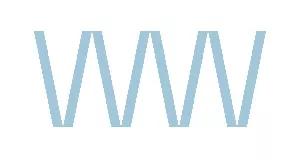Skyward Aviation 2008 Ltd v Tower Insurance Limited [2014] NZCA 76
The concerns we raised in our article "Does Tower really hold all of the cards?" have been confirmed in the Court of Appeal's decision, with Tower clearly not holding all of the cards when it comes to choosing the basis for, and measure of, settlement under their Provider House (Maxi Protection) Policy 1......
Skyward, who was unsuccessful before Gendall J in the High Court 2, appealed to the Court of Appeal asking it to decide the basis for, and measure of, Tower's liability under its policy. The Court of Appeal, in its decision released on 20 March 2014, found in favour of Skyward. It held that:
- Once it is established that the house is not economically repairable, it is the policyholder who ultimately determines what to do with the insured property; and
- If Skyward elects to buy another house, Tower is to pay the cost of that house up to the amount that Skyward would notionally incur, if it rebuilt the house on the existing site.
What is the basis of Tower's
liability?
The "basis of settlement provision" in Tower's
policy provides:
In all cases:
...
we have the option whether to make payment, rebuild, replace or repair your house;
The Court of Appeal held that, as a whole, the policy ultimately pointed towards the election of whether or not to repair, rebuild or purchase another property belonging to the policyholder. Where it is established that the house is not economically repairable, Tower has no right to choose the basis of settlement. They further observed that:
- Only to the extent that the policy restricts its options should the policyholder be deprived of its control over the repair, rebuilding or sale of its property.
- Once it is established that the insurer must fully indemnify the insured, the insurer should be indifferent to the insured's reinstatement decision.
- Up until that point, the insurer has a direct interest in any claim decision, as that will establish how much it will pay.
The Court of Appeal confirmed that Tower was not to pay anything more than the present day value of the property until the costs of reinstating, rebuilding or replacing were actually incurred by the insured.
What is the measure of Tower's
liability?
The Court of Appeal held that where the house is not economical to
repair, the maximum amount payable by Tower to Skyward is
materially the same, ie full replacement value of the house at the
existing site, full replacement value of the house at another site,
and the cost of buying another house.
The Court of Appeal held that if Skyward chooses the 'buy another house' option, then there is no other control or limit on the size, style or quality of the other house. Should Skyward purchase another house at a greater cost than the notional rebuild cost, then it would have to pay the difference.
The Court of Appeal also dismissed Tower's submission that the principle of indemnity would be offended if Skyward elected to replace the property, as it would receive the equivalent of the notional costs of rebuilding on the existing site because Skyward would receive something different and better than the original house. The Court discussed the fact that the parties had agreed that Tower's obligation to pay under the policy would be measured in one of two ways (ie a payment for present day value or full replacement value). The policy provided for full replacement, which necessarily means that Tower's liability is greater than straight indemnification.
Footnote
1The New Zealand Court of Appeal overturned
Gendall J's decision in the New Zealand High Court, as
discussed in our article "Does Tower really hold all of the
cards?", dated 22 August 2013.
2Skyward Aviation 2008 Ltd v Tower Insurance
Limited [NZHC] NZHC 1856.
The content of this article is intended to provide a general guide to the subject matter. Specialist advice should be sought about your specific circumstances.
We operate a free-to-view policy, asking only that you register in order to read all of our content. Please login or register to view the rest of this article.



